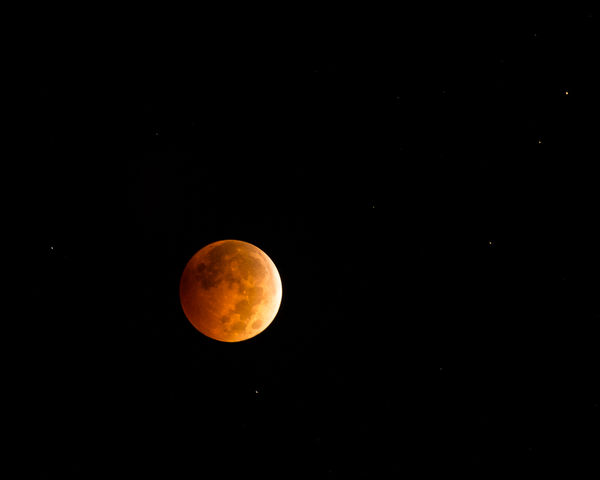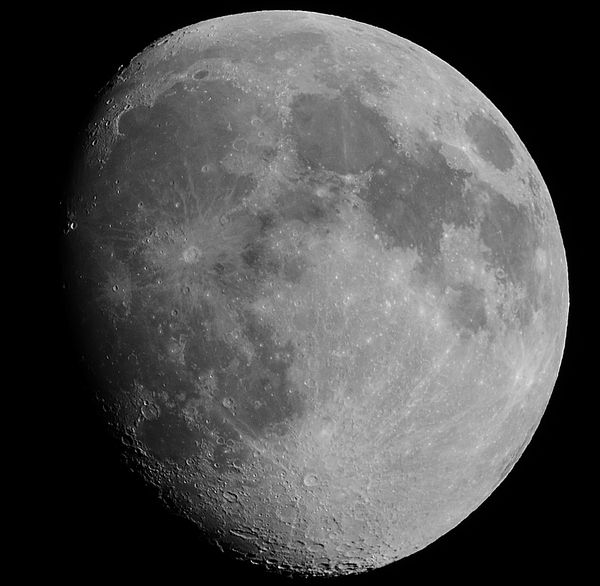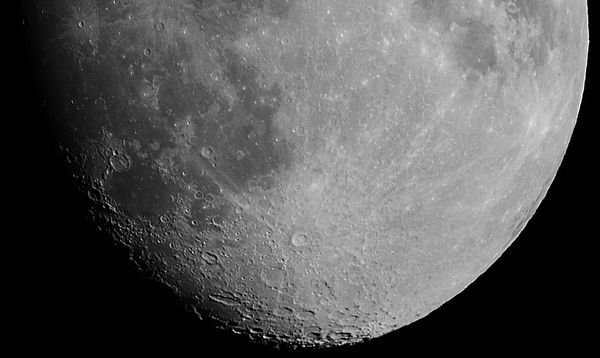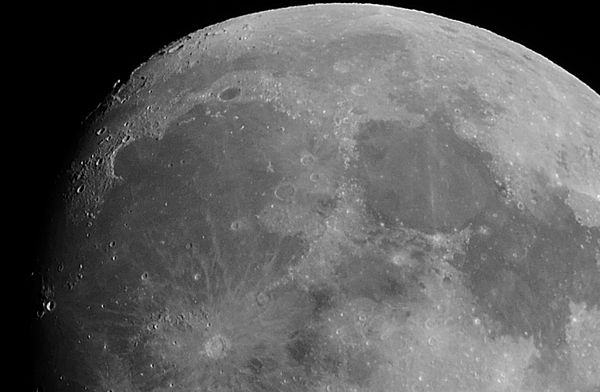Moon Photo tips
Sep 24, 2015 22:28:10 #
With the Super Moon and eclipse coming up Sunday night 10:11 PM eastern - 7:11 Pm Pacific - I thought I would share some of the tips I found here on UHH.
Here are some posts I found in a UHH search of moon photography.
Remember even though it's night time, the moon is sun lit. A good place to start is the "Sunny 16" rule. f/16 with the shutter speed the reciprocal of the ISO. If the ISO is 100 set the shutter speed to 1/100, if the ISO is 200 set the shutter speed to 1/200, etc.
Use 1/ISO for your shutter speed, and anywhere from F5.6-F16 for your aperture - always bracket to ensure that you get a usable image.
No filters.
Use F/8.
100 ISO.
1/200th sec as a starting point.
Careful not to overexpose.
Main thing people get wrong with moon photos is shooting them too bright.
For a full moon shot, be prepared to darken and push contrast in post work to get better moon detail.
I hope these help others as they did me.
Harvey
Here are some posts I found in a UHH search of moon photography.
Remember even though it's night time, the moon is sun lit. A good place to start is the "Sunny 16" rule. f/16 with the shutter speed the reciprocal of the ISO. If the ISO is 100 set the shutter speed to 1/100, if the ISO is 200 set the shutter speed to 1/200, etc.
Use 1/ISO for your shutter speed, and anywhere from F5.6-F16 for your aperture - always bracket to ensure that you get a usable image.
No filters.
Use F/8.
100 ISO.
1/200th sec as a starting point.
Careful not to overexpose.
Main thing people get wrong with moon photos is shooting them too bright.
For a full moon shot, be prepared to darken and push contrast in post work to get better moon detail.
I hope these help others as they did me.
Harvey
Sep 24, 2015 22:34:23 #
Sep 24, 2015 22:45:42 #
Harvey wrote:
With the Super Moon and eclipse coming up Sunday n... (show quote)
Thanks Harvey ! :thumbup:
Sep 24, 2015 23:26:23 #
These settings have always worked well for me when shooting the moon:
Taking Photos of the Moon
You will need at least a 300mm lense
Take off your UV filter
Use a tripod - Ballhead preferred
Set your camera to fully Manual
You can use Exposure Compensation if using Aperture or Shutter Priority. Use negative compensation
ISO 100 or 200
F 8.0 to F11.0
Shutter Speed 100, 125 or 250
Turn VR off
Use a remote shutter control
Shoot in RAW
Use Spot Metering
Manual Focus at Infinity
Taking Photos of the Moon
You will need at least a 300mm lense
Take off your UV filter
Use a tripod - Ballhead preferred
Set your camera to fully Manual
You can use Exposure Compensation if using Aperture or Shutter Priority. Use negative compensation
ISO 100 or 200
F 8.0 to F11.0
Shutter Speed 100, 125 or 250
Turn VR off
Use a remote shutter control
Shoot in RAW
Use Spot Metering
Manual Focus at Infinity
Sep 24, 2015 23:40:59 #
Good suggestions, Harvey - and a very timely topic with Sunday night's eclipse coming. The moon will be in total eclipse from (Central Daylight time) 9:11 until 10:23. Plenty of time there to experiment. Plus partial eclspe another hour on each end.
Remember, when it is in total eclipse it will be much dimmer so the sunny 16 rule won't apply. My shot here was taken at the total eclipse last October. Settings were ISO 200, f 5.6, and a whopping 2 second exposure. Also remember the rule of 500: Divide your lens' focal length into 500 to find the maximum exposure time (in seconds) to avoid blurred images or star trails. With a 16mm wide angle that means you can use 30 seconds. But if you want a sharp moon shot with a 200 mm lens you will have to keep your exposure time to about 2 seconds. Hope everyone has clear skies Sunday night.
Remember, when it is in total eclipse it will be much dimmer so the sunny 16 rule won't apply. My shot here was taken at the total eclipse last October. Settings were ISO 200, f 5.6, and a whopping 2 second exposure. Also remember the rule of 500: Divide your lens' focal length into 500 to find the maximum exposure time (in seconds) to avoid blurred images or star trails. With a 16mm wide angle that means you can use 30 seconds. But if you want a sharp moon shot with a 200 mm lens you will have to keep your exposure time to about 2 seconds. Hope everyone has clear skies Sunday night.
Harvey wrote:
With the Super Moon and eclipse coming up Sunday n... (show quote)
Sep 25, 2015 06:27:16 #
Thanks for some good advice....
My problem is focusing. Probably cause my eyes ain't that good anymore, certainly for Astro photog.
At least the moon is large enough for Autofocus to work.
I use a Olympus EPL5, with an electronic viewfinder attached. Once I have achieved a good focus, I then turn the camera to manual focus and touch nothing!
Alas the lens does not have any distance markings on it, but even setting to infinity on manual lenses does not always make for a sharp image.
At least I can take a photo and immediately view it at X14 enlargement and see if I have focused well.
Mj
My problem is focusing. Probably cause my eyes ain't that good anymore, certainly for Astro photog.
At least the moon is large enough for Autofocus to work.
I use a Olympus EPL5, with an electronic viewfinder attached. Once I have achieved a good focus, I then turn the camera to manual focus and touch nothing!
Alas the lens does not have any distance markings on it, but even setting to infinity on manual lenses does not always make for a sharp image.
At least I can take a photo and immediately view it at X14 enlargement and see if I have focused well.
Mj
Sep 25, 2015 08:04:54 #
Paul D wrote:
These settings have always worked well for me when... (show quote)
I would add using Mirror Up to your otherwise very comprehensive list. ;)
Sep 25, 2015 11:32:56 #
Question: Since out here in the west this will occur while it is still light, how does that change our settings, and will the eclipse even be visible? I'm usually sound asleep when these things happen, so I have no clue how to even start this!
Sep 25, 2015 11:49:08 #
AzPicLady wrote:
Question: Since out here in the west this will occur while it is still light, how does that change our settings, and will the eclipse even be visible? I'm usually sound asleep when these things happen, so I have no clue how to even start this!
How far west do you live? Our sun sets at 6:54pm MST here in Colorado tonight and the eclipse starts at 8:11pm MST Sunday night. I use the nearly the same settings when taking a photo of the moon in daylight as I do at night since it is lit by the sun. Here are some practice shots I took last night getting ready. These were taken at 8:24pm MST and it was very dark out.
Sep 25, 2015 12:13:20 #
zigipha
Loc: north nj
Paul D wrote:
These settings have always worked well for me when... (show quote)
why would I do spot metering if you have manual settings listed?
Sep 25, 2015 12:35:08 #
Sonewhere I found the equivalents to Sunny f16 for lesser lighting conditions. For clear sky lunar it is f11. For less than clear sky I imagine you'd go down another stop.
Sep 25, 2015 12:37:36 #
Harvey wrote:
With the Super Moon and eclipse coming up Sunday n... (show quote)
:thumbup: :thumbup: :thumbup:
Sep 25, 2015 13:18:01 #
I may not be able to see it in the St. Louis area because of a low in the Carolinas curling this way that won't send rain, but will probably cloud up the sky. I got a few pics of the last eclipse/blood moon, but it was so low in the sky I couldn't get much.
Sep 25, 2015 13:29:47 #
Thank you for your post regarding eclipse exposure needing to be much longer - I had not thought of that at all. i am definatly going to save that info.
GregWCIL wrote:
Good suggestions, Harvey - and a very timely topic... (show quote)
Sep 25, 2015 13:39:46 #
First off _ Great photos _ I live in CA about 75 mi west of the Nevada line - one hour difference in time. I was out scouting a location to shoot from and found one quite close to my house - I live in a forest of tall pine & ceders but there is an opening on the ridge just 1/4 mi from my house. A few high clouds last night but I am going out tonight for practice shots.
Thanks for posting your captures.
Harvey
Thanks for posting your captures.
Harvey
NormanHarley wrote:
How far west do you live? Our sun sets at 6:54pm MST here in Colorado tonight and the eclipse starts at 8:11pm MST Sunday night. I use the nearly the same settings when taking a photo of the moon in daylight as I do at night since it is lit by the sun. Here are some practice shots I took last night getting ready. These were taken at 8:24pm MST and it was very dark out.
If you want to reply, then register here. Registration is free and your account is created instantly, so you can post right away.















